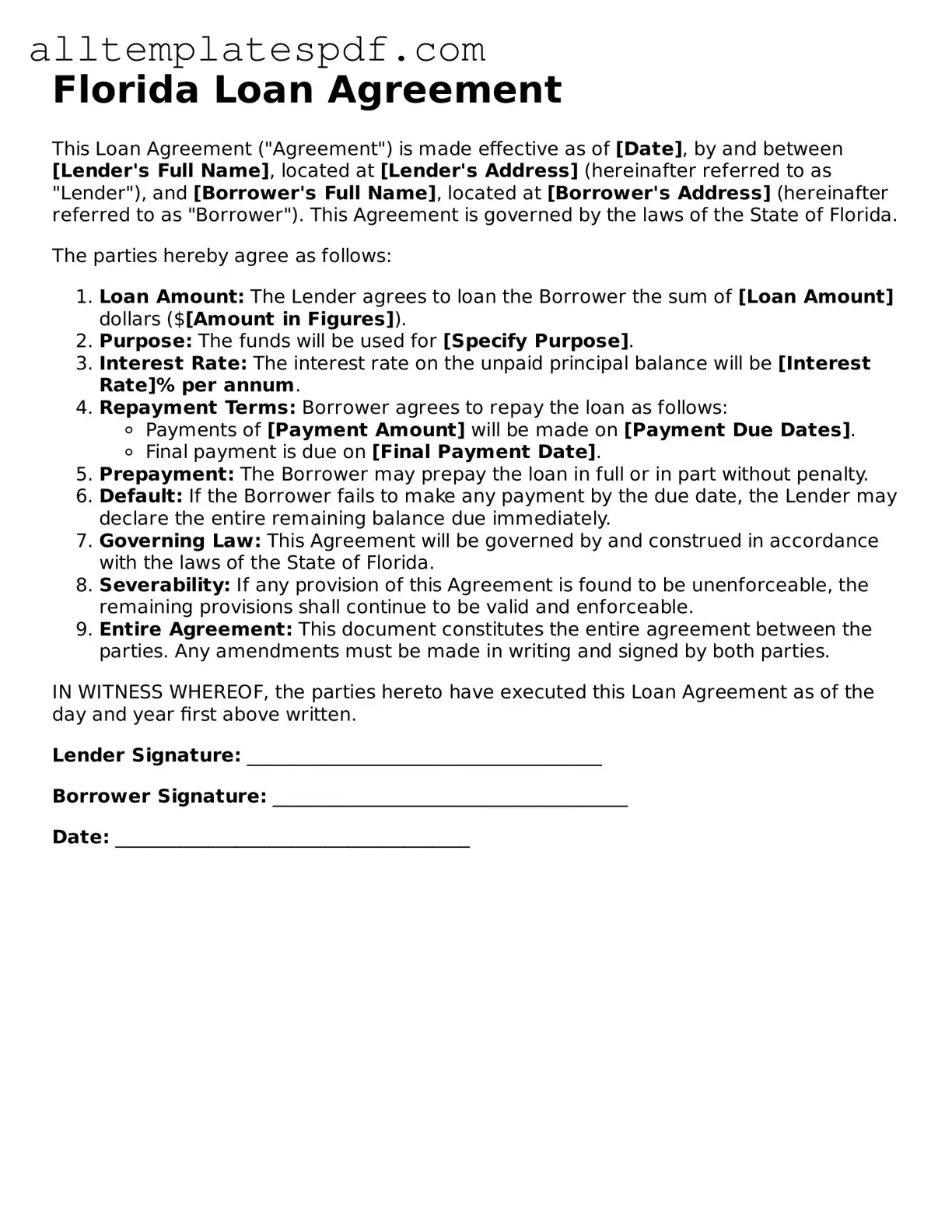Filling out a Florida Loan Agreement form can be a straightforward process, but many individuals inadvertently make mistakes that can lead to complications. One common error is failing to provide accurate personal information. When borrowers omit or misstate their names, addresses, or Social Security numbers, it can create confusion and potentially delay the loan approval process. It is crucial to double-check all personal details for accuracy before submitting the form.
Another frequent mistake involves overlooking the loan amount and terms. Borrowers sometimes either miscalculate the amount they wish to borrow or neglect to clearly outline the repayment terms. This oversight can result in misunderstandings later on. A clear articulation of the loan amount and repayment schedule is essential to ensure that both parties have aligned expectations.
Many individuals also forget to read the fine print. The terms and conditions of a loan can contain important information about fees, interest rates, and penalties for late payments. Ignoring these details can lead to unexpected costs. It is advisable to take the time to thoroughly review the entire document to avoid any unpleasant surprises down the line.
Additionally, individuals may neglect to include all necessary signatures. A loan agreement is a binding contract, and without the proper signatures from all parties involved, the document may be rendered invalid. Ensuring that every required party has signed the agreement is a critical step that should not be overlooked.
Another common error is failing to provide supporting documentation. Lenders often require additional documents to verify income, employment, or creditworthiness. Without these supporting materials, the loan application process may be delayed or even denied. It is important to gather all necessary documents in advance to facilitate a smoother application process.
Lastly, some borrowers may rush through the process and submit the form without thoroughly checking for errors. Typos or incorrect information can lead to significant delays or complications. Taking the time to carefully review the entire form can help prevent these issues and ensure a successful loan agreement.
